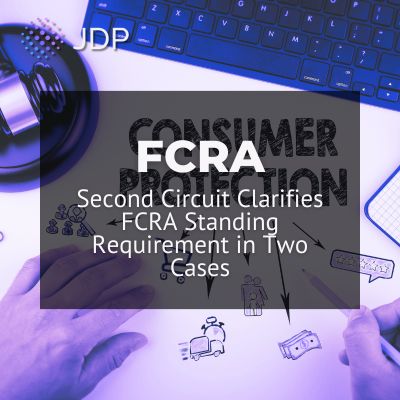January 8, 2025
Two cases before courts in the Second Circuit have clarified when an individual may establish standing for Fair Credit Reporting Act (FCRA) violation claims. As issued by the Second Circuit, the courts clarified that a consumer must identify a concrete injury caused by inaccurately reported information.
In the first case, a consumer filed an FCRA claim against a consumer reporting agency (CRA). The plaintiff argued that the CRA had disseminated inaccurate personal information, including his name and address. Though unsuccessful, he tried multiple times to have the CRA update his file. However, in summary judgment, the district court found that the plaintiff failed to establish standing. According to the court, the plaintiff lacked concrete injury traceable to the inaccurate information in his report.
Upon appeal, the Second Circuit found that simply disseminating an “[i]ncorrect address information, a one-year disparity in the birth year, and slight variations of the appellant’s name” is insufficient to establish concrete harm. The plaintiff further claimed that he was a victim of identity theft. However, the Second Circuit determined that the plaintiff lacked sufficient evidence to link this to the inaccurate reporting performed by the CRA.
The second case concerned a class of consumers filing against a CRA over the “Specially Designated Nationals” list. According to the class, the CRA reported that they appeared on this list, which the U.S. Treasury Department’s Office of Foreign Assets Control maintained. Among other things, this list designates individuals as ineligible for employment or credit.
The Second Circuit denied a motion from a class member to intervene and substitute for the lead plaintiff due to a failure to allege concrete harm. According to the prospective plaintiff, the report included information related to himself and the Specially Designated Nationals list. However, the Second Circuit explained that these claims contained “no allegations that the information contained in the report was misleading, false, or otherwise defamatory.”
The prospective plaintiff also failed to allege a “specific concrete injury in fact” resulting from such dissemination of information. This failure contrasted with the former lead plaintiff, who allegedly suffered monetary harm from a denied loan application because of the report.
These decisions stressed that the Second Circuit firmly holds that consumers may only establish standing for FCRA claims if they can identify a concrete injury resulting from disseminating inaccurate information. Furthermore, these results illustrate the importance of accuracy and the impacts of inaccurately reported information.
Background checks are made easy with JDP. Ask any questions you may have and learn more by contacting a sales rep today.
